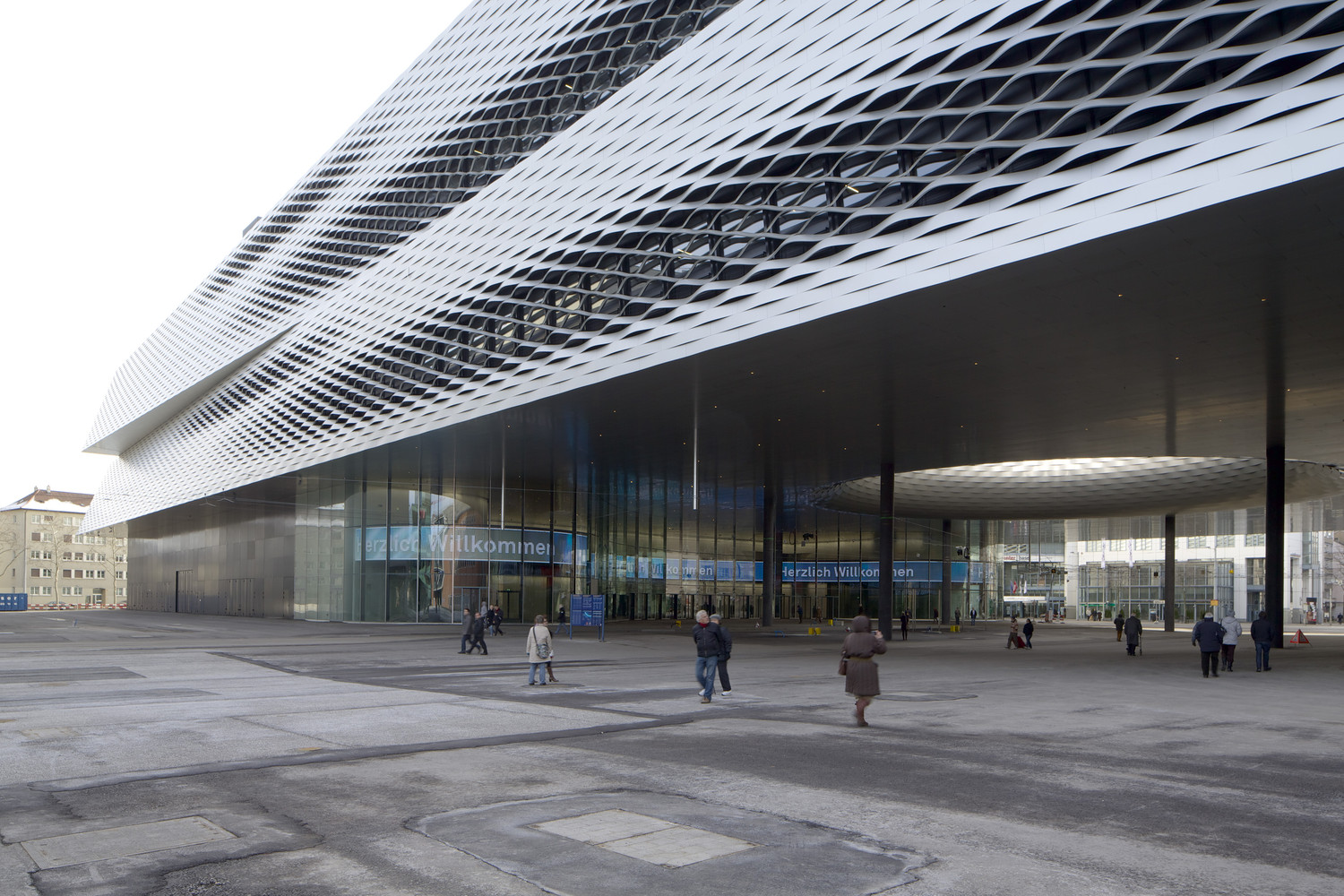NEW BASEL'S FAIR
-
The concentration of exhibition halls around the Messeplatz (Exhibition Square) is the key entrepreneurial aim of the Messe Basel leadership in its further development. Building the Messe Tower and replacing Hall 1 with a highly modern building and optimum exhibition areas were the first components in this strategy, followed by the continuing construction of new halls.
This concentration of exhibition centre activities is also an important urban planning matter for the development of the surrounding Kleinbasel neighbourhood, aimed at regaining outlying exhibition spaces on the present Deutsche Bahn (German Railways) area for apartments, offices and small businesses while simultaneously upgrading the Messeplatz as a focal point in Kleinbasel. Achieving this entrepreneurial as well as urban planning aim of congegrating the Messe and at the same time retaining the important Watch and Jewellery Fair within Basel, required the replacement of two halls on the Messeplatz (Hall 1 at the front and Hall 3). These halls no longer fulfilled modern exhibition requirements in terms of ceiling heights, column spacing or load bearing capacity of the floors. It was also important that all halls be interconnected to ensure flexibility for various events, and that nearby car parking facilities should be retained.
Fulfilling exhibition requirements for large volumes and uninterrupted floor areas, the New Hall is a three-storey extension of Hall 1 along the Riehenring. To provide indoor connection to all exhibition halls, the new building bridges over the Messeplatz and creates a covered public space, perhaps comparable to a railway station concourse or indoor market, realized in a modern design language. This key architectural and urban planning element defines the south end of the Messeplatz and is illuminated from above by a generous circular opening.
lanned for many uses and events that will take place during and between exhibitions, and featuring restaurants and shops intended for a mix of international, local, exhibition, and public visitors, we have named this new outdoor hall the City Lounge. Open at all times, the City Lounge not only defines the entrance to the fair spaces, but will be a focal point of public life on Clarastrasse (the main shopping street in Kleinbasel) and will significantly enliven the street culture around the Messeplatz. For example, during the autumn fair the partially covered hall will create a fascinating atmosphere with smaller booths and aisles open to, yet protected, from the elements. With the addition of the New Hall, current activities on the Messeplatz will continue, but they will take place in a space with different proportions. What was once an elongated rectangle that more or less ran into Clarastrasse without noticeable demarcation is now almost a square with clearer urban definition.
A new “lane” between the New Hall and existing multi-storey car park offers better access to Messeplatz for pedestrians. Connecting east to the adjacent residential area around Riehenstrasse and Peter Rot-Strasse, this “lane” is a continuation of Isteinerstrasse and creates a new east-west link which integrates the Messeplatz into the quarter. Service and supply to the New Hall will be mainly through an underground route, thus reducing truck traffic on Riehenstrasse.
The Messeplatz is a pedestrian and cyclist precinct. Together with the adjacent Rosentalanlage, the Messeplatz will be the main outdoor space for the many residents of the Messe district. The green belt along the Messeplatz-Wettsteinplatz link will be enhanced by more trees on Riehenstrasse to visually connect the exhibition centre to the Rosentalanlage.
Photo credits: Messe Basel
1870 Projects













